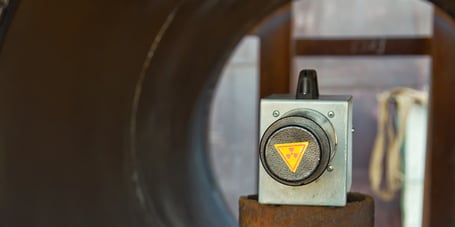Radiographic Testing Explained
With impressive precision and ability to identify cracks, corrosion, and material degradation, radiographic testing has been a widely accepted method of nondestructive testing for a wide variety of industries including aerospace, automotive, and military. So, what exactly is radiographic testing and why is it so widely used?
Click Here for our The State of Aerospace Manufacturing Infographic
What is Radiographic Testing and How Does it Work?
Radiographic testing is an application of radiography. It's a nondestructive examination technique that uses gamma rays or x-rays to examine a component's internal structure. This technique identifies any flaws or defects that a part may have which the naked eye could not detect. Radiographic testing also comes with numerous techniques that come with their own set of advantages and disadvantages.
Conventional Radiography Testing (RT)
In conventional radiography testing, radiation is emitted onto a film that produces an image of the part that is being tested. The image can show evidence of any damages or flaws within the part.
Advantages
-
Higher spatial resolution
-
Even with the cost of chemicals added in, RT is inexpensive compared to other techniques.
-
RT is easy to use and widely available. RT can give quality results if the technique properly executed.
Disadvantages
-
With RT, there is a lower contrast resolution in the images produced.

Radiographic testing uses imaging technology to test for structural flaws.
Computed Radiography Testing (CRT)
Another imaging technique that can be used is computed radiographic testing. In computed radiography testing, digital images are produced on reusable phosphorus plates instead of a film.
Advantages
-
With shorter lead times for images, exposure times will be decreased.
-
The original archived images cannot be altered so the integrity of the raw data will be maintained. The image however can be sharpened, filtered, and zoomed for analysis by the technicians or customers for evaluation purposes.
-
The digital images can also be emailed or posted on the web which allows for multiple parties to aid in analysis.
-
CRT uses the same radiation producing devices, just without the film which means there is no need to buy or dispose of chemicals.
Disadvantages
-
The main disadvantage with CRT is overall cost. For example, the imaging plates can be expensive and can be easily damaged if not taken care of properly.
Potential Hazards and Safety Concerns
When working with radiographic testing, the primary hazard is the radiation exposure that the machine omits. High doses of radiation can lead to hair loss, nausea, vomiting, and hair or skin loss. Be sure to take the proper safety precautions in order to ease the effects of radiation.
No matter the technique you choose to utilize, radiographic testing eases the inspection process for manufacturers. With the ability to inspect assembled components, detect both surface and subsurface defects, verify internal flaws, and alert of changes in thickness, corrosion or material density changes; radiographic testing is widely used and continues to benefit numerous industries.










